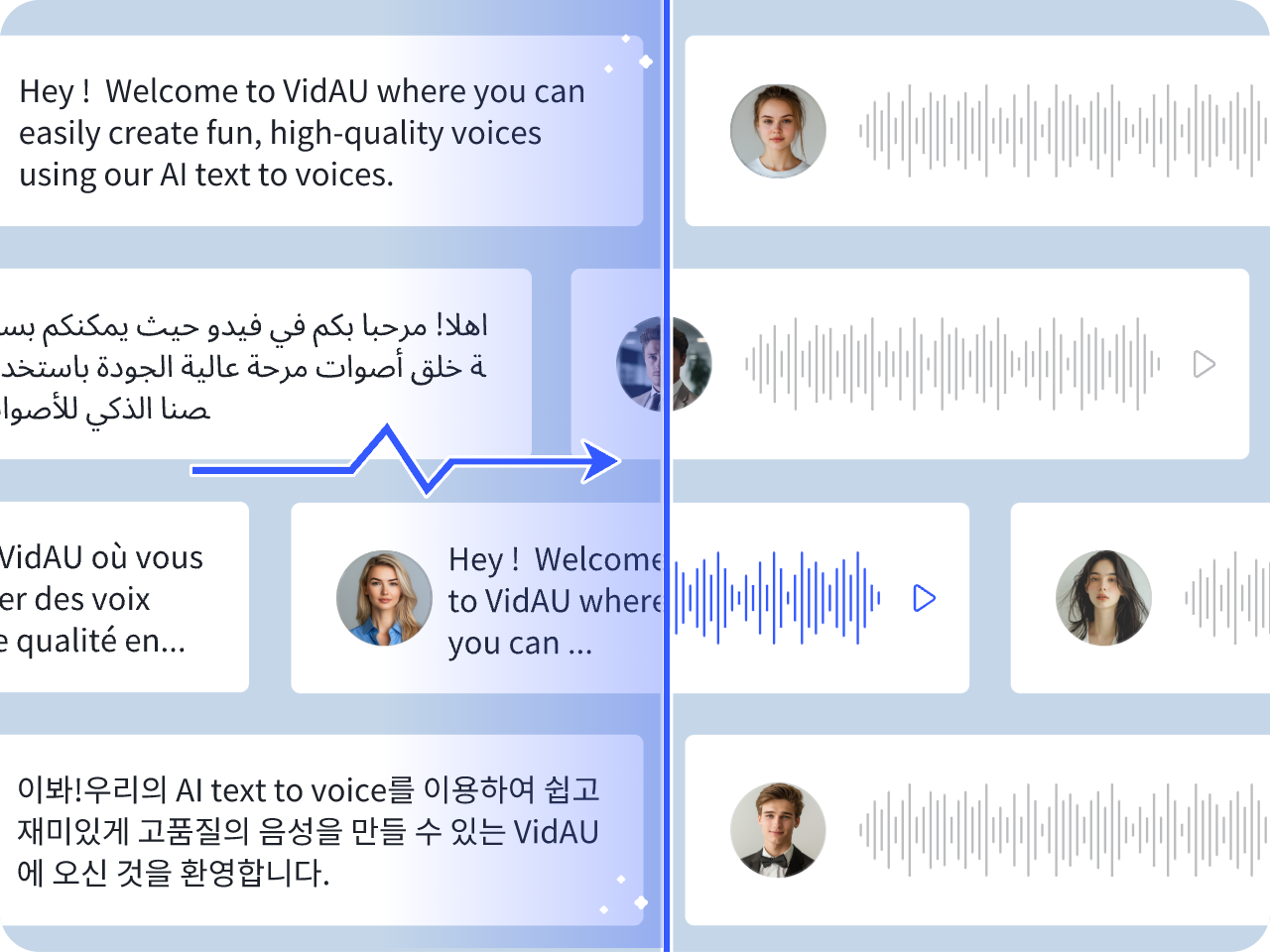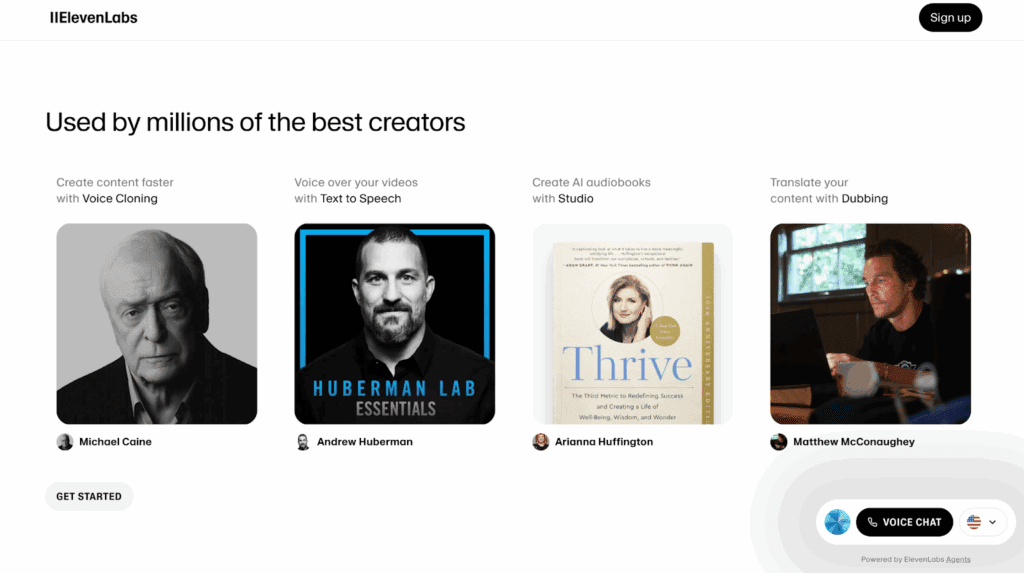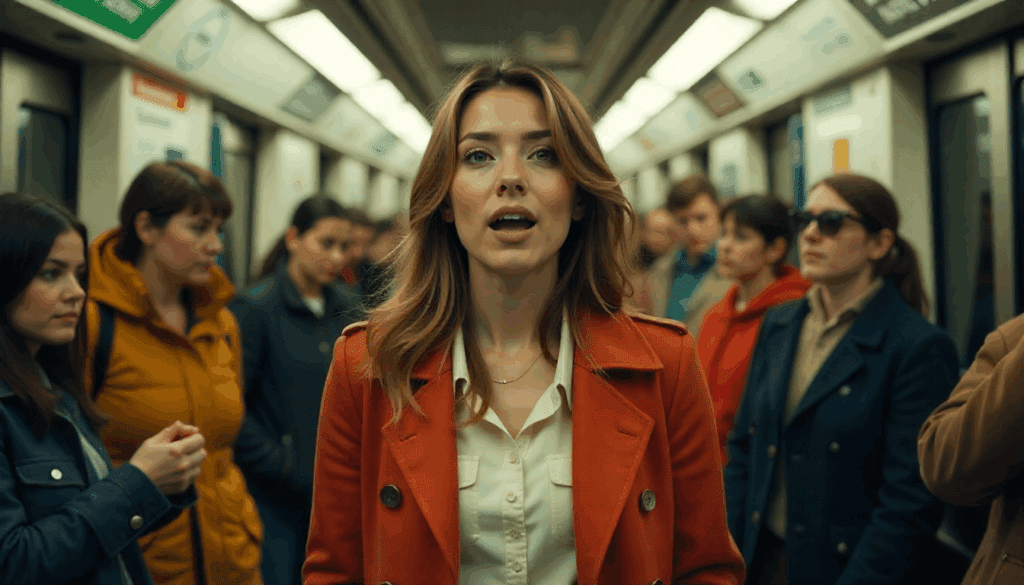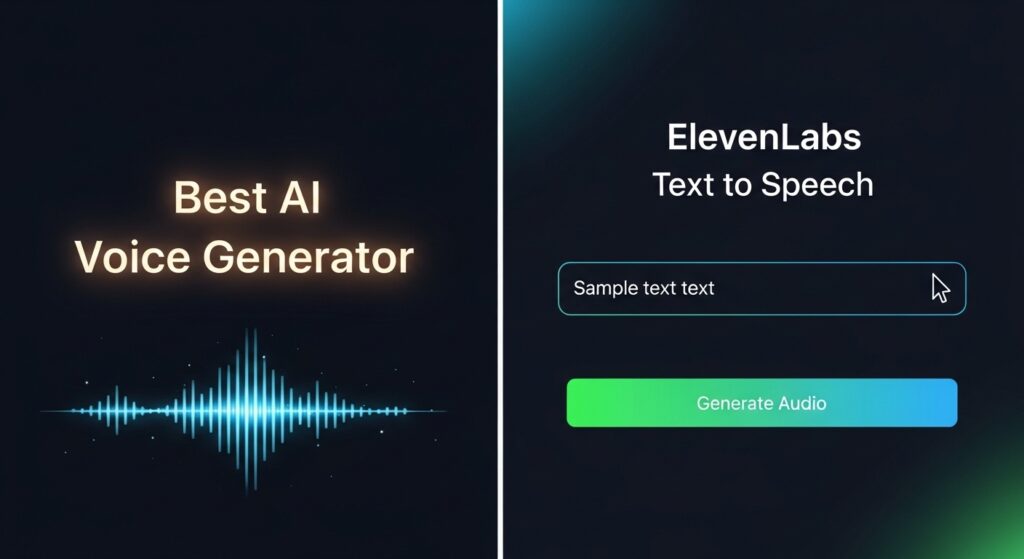AI Video Tutorial: How VidAU AI Video Works Step-by-Step

AI video generation turns text into motion visuals automatically. You describe the scene, objects, product, lighting, and actions. VidAU builds the camera movement, background, animation, and cinematic effects without filming or manual editing.
You do not work inside a timeline. You do not cut clips. You do not keyframe effects. VidAU reads the prompt and generates a final video that is ready for ads, social posts, website banners, trailers, explainers, or brand storytelling.
VidAU gives you full creative control before you generate:
- You select the model that matches your goal (cinematic, UGC, storytelling, product-focused, social-ready)
- You pick the format and resolution for your platform
- You choose the duration and number of variations you want
- You add optional images for start and end frames if you need product consistency
The result is a polished video built from instructions instead of footage.
What You Need Before Starting
You get the strongest results when you prepare the basics before writing the prompt.
- A clear prompt that describes the scene
Describe the product or subject, environment, lighting, motion, and emotion in short phrases.
Example structure:
- Main object or character
- Location and background
- Lighting
- Motion or action
- Mood
- Optional start and end frame images
Upload a product image or key visual to maintain brand identity and reduce variation between generations. - Your preferred video duration
Shorter videos work best for ads. 4–8 seconds is ideal for TikTok, Reels, and Shorts. - The platform where the video will be posted
Select the aspect ratio based on where you will publish:
- 9:16 for TikTok, Reels, Shorts
- 1:1 for Facebook and Instagram feed
- 16:9 for YouTube and websites
Prompt Tip for Best Performance
Short prompts produce the highest accuracy.
Long paragraphs reduce clarity and increase unwanted objects.
Recommended length: 60–120 words
“Close-up of a luxury perfume bottle on a polished marble table. Soft gold studio lighting, gentle reflections on the glass surface. Slow camera zoom toward the bottle. Fine mist particles floating in the air for the atmosphere. Warm cinematic background blur with bokeh lights. High-detail texture on the cap and label. Smooth, elegant motion. Premium, high-end mood.”
Tip: If you want variations, you can rewrite prompts to suit your niche etc. beauty, tech, fashion, jewelry, food, skincare, fitness, gaming or UGC ads.
Weak example:
“A full indoor room scene with a lot of different props, multiple people moving, multiple objects, dynamic lighting, multiple angles, etc.”
Write what you want to see. Avoid adding too many ideas in one video.
Step-by-Step: How to Create AI Video With VidAU
Step 1: Open AI Video
Log in to your VidAU dashboard. On the left panel under Generative AI, click AI Video.
The workspace loads with all available video generation models.
Step 2: Choose the Right Model for Your Goal

VidAU AI Video offers multiple models. Each one is built for a different video style and use case. Pick the model before writing your prompt.
| Model | Best For |
| Veo3.1 | Cinematic scenes, physics-accurate motion, branded hero ads |
| Sora2 | Creative storytelling, physics-driven action, concept scenes |
| Vidu Q2 | Consistent characters across shots, storyline ads, actors that remain the same |
| Wan2.5 | High-control animation, product scenes with precise motion |
| Seedance1.0 | Fast video generation for social content and quick production |
| Kling2.5 | Texture and lighting-focused ads with premium aesthetics |
| VidAU Video V2.2 | Affordable social-style videos for fast ads and TikTok content |
| PixVerse V5 | Instant scene generation for social reels, vertical ads, short clean loops |
| MiniMax Hailuo2.3 | Reasoning-based scene generation, logical movement and structured storytelling |
If you are unsure, use this quick rule:
- E-commerce / TikTok ads → Vidu Q2 or VidAU Video V2.2
- Cinematic marketing / brand hero video → Veo3.1
- Creative anime / artistic scenes → Sora2
- Sharp 3D textures / premium visuals → Kling2.5
- Speed and budget priority → Seedance1.0 or V2.2
Step 3: Pick Your AI Video Model Version

After selecting a model (Veo3.1, Sora2, Vidu Q2, Wan2.5, etc.), choose the Model Version.
You will see two options:
- Quality
Quality-first mode that focuses on superior detail, lighting, texture and realism.
Use this when you want cinematic visuals, product shots, storytelling scenes, or ad-grade output. - Fast
Speed-first mode that generates results faster with lower compute cost.
Use this for rapid testing, draft versions, multiple variations or social content that needs quick turnaround.
Tips:
- Pick Quality when output visuals affect revenue (ads, campaigns, promos, brand videos).
- Pick Fast when you plan to generate many variations to find your winning creative.
Once selected, the workspace locks your version and applies it to the final generation.
Step 4: Write your prompt

You tell the model what video to create using short, direct instructions.
The prompt box accepts up to 1,000 characters.
How to write a strong prompt:
- Start with the scene
- Add the subject and action
- Add camera style or visual feel
- Add product or brand element if needed
- Add emotion or pacing
Examples:
- “Close-up shot of a luxury perfume bottle rotating on a glass table, soft golden lighting, slow motion, cinematic style, elegant and high-end mood.”
- “A young woman unboxing wireless earbuds in her room, energetic mood, fast transitions, TikTok style, bright colors.”
- “Gym athlete lifting weights, dark background, intense lighting, dramatic tone, sweat particles visible, high contrast.”
Tips:
- Keep it short and practical
- Avoid long storytelling lines
- Use keywords that match what you want to see
- If you want text on screen, add it in prompt
Example: “Add text: 50% Off Today. Add text: Shop Now.”
Once the prompt is complete, scroll to the next settings.
Step 6: Add Frames or Ingredients

This section controls how the video starts and ends, and which visual elements appear inside the scene.
You will see two tabs:
Frames
Use this if you want the video to start and end with specific images.
- Click Upload the start frame image
Add the first image that introduces the video - Click Upload the end frame image
Add the final image that viewers see before the video ends
This works well for:
- Product hero shots
- Brand logo intros
- Before-and-after ads
- “Shop Now” end screens
If you enable Add End Frame, VidAU will pull your end image into the final second of the video for better retention and CTR.
Ingredients
Switch to this tab to upload assets that appear inside the video.
Examples of assets you can include:
- Product photos
- Founder or model photos
- UGC screenshots
- App interface
- Packaging close-ups
VidAU arranges them dynamically based on the selected model, so you do not need to create a layout manually.
Tip:
Use clear, high-resolution images for stronger visual output. PNG or JPG works best.
Step 7: Set Aspect Ratio and Add a Negative Prompt (Optional)

You now finalize how the video fits your publishing platform and eliminate unwanted elements.
Aspect Ratio
Choose the layout that matches your campaign:
- 9:16
Best for TikTok, Instagram Reels, YouTube Shorts, Snapchat Spotlight
Mobile users view full screen, best for performance ads - 16:9
Best for YouTube, websites, desktop ads, presentations
Works well for longer explainer content
Pick the one that aligns with where your audience watches.
Negative Prompt (optional)
Use this to remove elements you do not want the AI to generate.
Examples you can include:
- cartoon look
- distortion or blurry effects
- dark mood or gloomy lighting
- animals, explosions, random characters
- slow motion or heavy motion blur
- unrealistic skin texture
- unwanted background objects
Write short, clear instructions, such as:
- “No cartoon style, no blur, clean white background, realistic product texture.”
This step helps ensure:
- clean visuals
- consistent branding
- fewer revisions later
Step 9: Select Resolution, Duration, and Quantity
You control the final output of your AI video from this panel.
Resolution
- 720p if you want faster rendering and lower file size
- 1080p if you want sharper visuals for ads, YouTube, and paid campaigns
Duration
- Pick 8s by default, or a longer format if available based on the model you selected
Short durations work best for ads, hooks, and social content
Generate quantity
- Choose how many video variations you want in one click
- 1 for final export
- 2–4 when you want multiple versions for A/B testing
Why this is key
Marketing teams generate multiple variations to test different openings, pacing, or emotional tone. More variations improve audience match and reduce ad fatigue.
After these settings are locked in, scroll to the final step to generate your video.
Step 9: Generate Your AI Video

You finish the setup on this stage.
- Review your credits under Credits required
- Click Generate
- VidAU starts rendering your video using the selected model, prompt, frames, and resolution
- The output appears in Projects when ready
- Download or continue editing if you want more variations
Every generation becomes a reusable asset. You repeat the process to create new variations fast by changing:
- Prompt
- Frames
- Duration
- Model
- Seed
- Aspect ratio
This is where you scale performance without extra editing.
When VidAU AI Video Works Best
VidAU performs strongest in scenarios where motion, aesthetics, and product clarity influence buying decisions and user engagement. The tool converts simple text prompts into polished scenes that look like planned video shoots. The use cases below produce high results with AI-generated motion.
- Product commercials
Highlight the product with motion, reflections, camera zooms, and dramatic lighting. Ideal for perfumes, gadgets, skincare, jewelry, electronics, fashion, and accessories. - TikTok ads and motion creatives
Fast motion and bold lighting styles keep viewers watching longer. Perfect for direct-response videos, CTA-driven ads, and UGC-style product showcases. - Intro and promo videos
Logo intros, campaign announcements, new feature launches, brand milestones, and trailer-style reveals work well with cinematic motion. - Animated brand storytelling
Convert brand values, product missions, or business narratives into cinematic visual stories without animation skills or filming. - Social UGC-style scenes
Motion styles simulate handheld shots, lifestyle backgrounds, and real-world settings that match viral social formats. - Launch announcements
Ideal for limited drops, seasonal collections, flash sales, and new product releases where strong visuals drive urgency. - Explainer visuals
Turn ideas, text, industries, and tech topics into simple motion visuals for SaaS demos, finance explainers, product benefits, and education. - Visual loops for music and lifestyle content
Perfect for background visuals, album art animation, DJ visuals, ambience clips, and aesthetic video playlists.
VidAU removes filming costs and editing delays. You skip camera work, reshoots, lighting setup, and manual timeline editing.
Tips for Better Results
VidAU gives top performance when the prompt is clean and structured. These tips ensure output accuracy and strong visuals.
- Use one clear scene per video
Avoid multi-scene storytelling in a single video. Focus on one product, one object, or one location. - Keep prompts under 120 words
Shorter prompts create sharper visuals and fewer unwanted elements. Use short phrases, not paragraphs. - Use lighting keywords for realism
Lighting dramatically increases video quality and cinematic feel. Strong examples include:
- soft gold lighting
- neon cyber lighting
- studio light
- sunset warm light
- dark teal spotlight
- glossy reflections
- Use frames for consistency
Uploading a start frame and end frame ensures brand identity stays constant across variations. Ideal for eCommerce and ads. - Test multiple models for best conversion rate
Different models suit different creative goals. Generating variations across 2–3 models increases success for A/B testing.
FAQ
Does VidAU require video editing experience?
No. The platform builds motion, camera movement, and visuals.
Can I use the videos for ads?
Yes. Output is designed for TikTok, Facebook, Instagram, and YouTube ads.
How long does rendering take?
Seconds to minutes depending on model and resolution.
Is 1080P required?
Use 1080P for paid ads, 720P for rapid testing.






